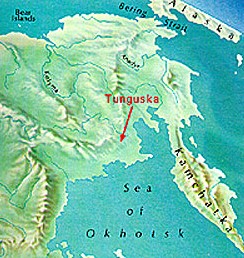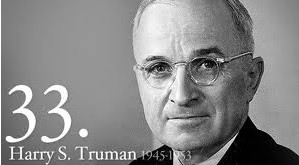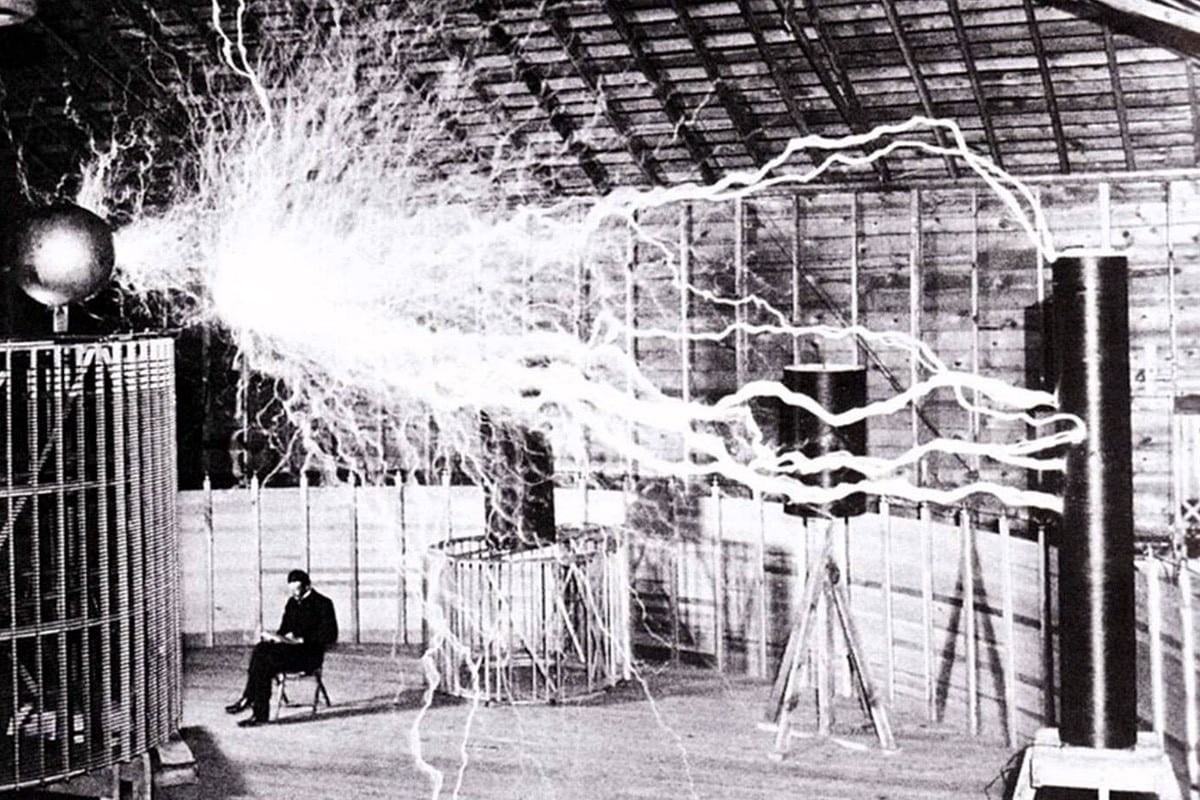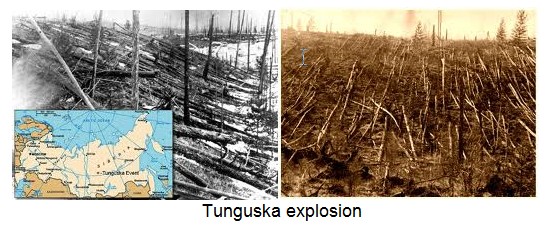By Sir Vojislav Milosevic, Director, Center for Counter-Terrorism and World Peace, Belgrade, Serbia
Nikola Tesla died on January 7th, 1943 in Hotel New Yorker, in Manhattan, in room 3327 on the 33rd floor of the hotel. Immediately after Tesla’s death, Tesla scientific papers vanished from his hotel room in Hotel New Yorker. Tesla papers were never found. Tesla papers contained scientific data and information about “Death Rays”, which could be used for military purposes.
In 1947 the Military Intelligence service identified the writings about the particle-beam contained in Tesla’s scientific papers as “extremely important.” Military intelligence services of the USA, Germany and USSR were vitally interested in Tesla’s “Death Rays”.
The current beam-weapon program is originated from Tesla’s “Death Rays” idea.
Tesla claimed of having invented a “death ray” capable of destroying 10,000 enemy airplanes at a distance of 250 miles (400 kilometers).
On July 23, 1934 Time Magazine wrote an article about Tesla’s Ray:
“Last week Dr. Tesla announced a combination of four inventions which would make war unthinkable.
Nucleus of the idea is a death ray – a concentrated beam of sub-microscopic particles flying at velocities approaching that of light. The beam, according to Tesla, would drop an army in its tracks, bring down squadrons of airplanes 250 miles away. Inventor Tesla would discharge the ray by means of 1) a device to nullify the impeding effect of the atmosphere on the particles, 2) a method for setting up high potential, 3) a process for amplifying that potential to 50,000.000 volts, 4) creation of “a tremendous electrical repelling force.”
Tesla “Death Rays” are Particle Beams

Particle beams are special sorts of electro-magnetic waves, a special sort of light.
The white light or daily light is a mixture of different length of waves. White light is a mixture of many colors which can be separated. Red light has long waves whereas blue light has short waves.
The waves making up a particle beam are quite different. Not only are all the waves the same length, but they are lined up so that the tops (peaks) of the waves coincide with each other.
Particle beams can be concentrated into a tiny point. They have tremendous energy.
Particle beams can produce enough heat to turn a metal into a vapor! They are accurate cutting tools that can even cut diamond, the hardest substance known to man. Particle beams are powerful enough to cut through metal in military operations, a particle beam can be bounced off a target such as an enemy airplane or ship to determine its distance and speed. Particle gyroscopes (guidance devices) are being develop to direct bombs and artillery shells to their target.
Today, particle beams are used also in medicine: for microsurgery, in delicate brain surgery and for coagulation of bleeding vessels into the eye structure of retina. They are also used to treat detached retina. The particle “knife” is completely sterile and seals small blood vessels as it cuts, minimizing tissue bleeding.
Tesla’s work on particle beam weapons can be traced all the way back to 1893 with his invention of a button lamp, and again to 1896 when he replicated the work of William Roentgen, discoverer of X-rays. At that time, Tesla was “shooting” X-rays over considerable distances, creating photographs of skeletons sometimes as far away as 40 feet from the source of the gun. Tesla was also involved in experiments with shooting cathode rays at targets. This and similar work from one of Tesla’s British colleagues, J.J. Thompson, led to the discovery, by Thompson, of the electron. During that period in the mid-1890’s, Tesla conversed often with Thompson, particularly in the electrical journals.
At about the year 1918, Tesla apparently had a laser-like apparatus that he shot at the moon. From studying his great 1893 work THE INVENTIONS, RESEARCHES AND WRITINGS OF NIKOLA TESLA, it is apparent that the button lamp discussed above had all of the components necessary to create a laser beam.
This lamp was so constructed so as to place a piece of matter such as carbon, or a diamond or a ruby, in the center, and bombard this “button” with electrical energy that would bounce off the button onto the inside of the globe and bounce back onto the button. If this were a ruby, and Tesla specifically worked with rubies, then is exactly how a ruby laser is created.
Tesla refers in INVENTIONS to a “pencil-thin” line of light that was created with this device. It is my belief that Tesla not only invented the ruby laser in 1893, but he also demonstrated it and published it’s results. The problem with the device was that it was set up so as to “vaporize,” or destroy, the button, so that the laser effects were probably short-lived.
However, if we jump ahead to the 1918 story, it is very possible that Tesla used the same or similar kind of apparatus to send laser pulses to the moon.
Now, to get to the particle beam weapon, this is an entirely separate invention and evolved from, all things, a pop gun that he used as a boy. The pop gun works by pumping air into the barrel and causing the cork to come barreling out. This gun could be used to shoot targets and small animals, and Tesla discusses this gun in his autobiography.
Tesla’s labaratory in Wandercliff
What Tesla realized was that a “ray” would not have the energy requirement to be destructive. Also, even if he had a laser, or laser-like ray, it would still disperse somewhat, over long distances. So Tesla came to the conclusion that instead of shooting a ray of light, he would shoot microscopic pellets. The stream could not disperse because, theoretically, it would be one pellet thick.
After studying the Van de Graaff electrostatic generator, which used a cardboard belt to generate the high voltages, Tesla came to utilize the same essential set-up to generate tremendous charges, but he replaced the belt with an ionized stream of air and then used this electrified stream to “repel” the small pellets which were made out of tungsten. These pellets were shot out of an open-ended vacuum tube which was shaped in the form of a cannon.
 It is my belief that this device, which was presented to the International Tesla Society by the late Dr. Andrija Puharich at the 1984 Tesla Centennial Symposium (and published in that proceedings as, essentially, Tesla’s 1937 top secret patent application), was designed to be as large as the tower at Wardenclyffe.
It is my belief that this device, which was presented to the International Tesla Society by the late Dr. Andrija Puharich at the 1984 Tesla Centennial Symposium (and published in that proceedings as, essentially, Tesla’s 1937 top secret patent application), was designed to be as large as the tower at Wardenclyffe.
The shaft, which could have been as tall as 100 feet, would contain the “belt” of ionized stream of air.
The round bulbous part of the tower would continue to circulate the ionized stream and hold the charge, and out the top of the tower there would be the long barrel of the gun. Such a machine, which Tesla tried to sell during World War II to the United States, England, the Soviet Union and Yugoslavia, would be able to shoot down incoming planes at distances of about 300 miles.
A question remains as to whether or not Tesla actually constructed a particle beam weapon. I believe that when looks at this question from a historical standpoint, we see that he had been working on this and similar devices for over 30 years. Thus, it is my opinion that Tesla did, indeed, construct a working model. At the age of 81, at a luncheon in his honor, concerning the Death Ray, Tesla stated:
“But it is not an experiment…. I have built, demonstrated and used it. Only a little time will pass before I can give it to the world.”
According to Tesla’s recollection in the Leland Anderson edition of Tesla’s testimony to his lawyer in 1916 (Nikola Tesla and His Work in Alternating Currents), the tower was used in some fashion until 1907.
However, its larger functions actually became disoperational in 1903 when the Westinghouse company came in to remove vital equipment. Therefore Tesla did not have the equipment to create such an explosion five years later. Further, according to Dr. James Corum, in a recent phone interview, (June 5, 1997), the tower had the capability of producing only about 300 kilowatts (six times what many radio stations produce) and delivering 10 kilowatts of power to the opposite side of the earth.
This would be approximately enough energy to light a light bulb.
A tremendous feat in its own right, however, nowhere near the amount of power required to create the Tunguska explosion. Corum stated that the problem in transmitting the kind of tremendous power required is that the air around the transmitter breaks down thereby rendering the machine inoperable.
Tunguska Explosion 30 July 1908
Recent estimates in the book The Day The Sky Split Apart by Roy Gallant, (1995, Simon & Schuster), state that the Tunguska explosion created devastation in an area which approximated the size of Rhode Island, and released energy 2,000 times greater than the atom bomb that was dropped at Hiroshima. (watch video about Tunguska´s Explosion.
According to Corum, it would be essentially impossible to transmit energy to achieve this result.
 However, Corum went on, if Tesla had the capability to release merely 1% of the earth’s magnetic charge, that could create the amount of energy to achieve a Tunguska-like explosion.
However, Corum went on, if Tesla had the capability to release merely 1% of the earth’s magnetic charge, that could create the amount of energy to achieve a Tunguska-like explosion.
He did not think that Tesla did this, however. Photos taken from the site of the Siberian explosion reveal numerous trees flattened, much like the trees looked after the volcanic eruption of Mt. St. Helens, which occurred recently in Washington.
I do not believe that Tesla had the technology or the inclination to use Wardenclyffe to deliver the kind of energy necessary to create such a disaster.
Tesla certainly discussed the idea of using a Wardenclyffe like tower to shoot down incoming aircraft, via a particle beam weapon, and as a completely separate concept, he also discussed the idea of creating earthquakes, which could be engendered in a variety of ways, e.g., by bringing buildings down by placing oscillators on their main support beams, or by setting off gigantic dynamite charges timed to a resonant earth frequency.
So where did the idea that Tesla caused the explosion in Tunguska originate?
The answer is probably threefold:
Through Tesla’s own writings whereby he says on May 3, 1907, in the New York World, just one year before the Tunguska explosion, that his “magnifying transmitter” has already produced 25 million horse power, and that “a similar and much improved machine now under construction, will make it possible to attain maximum explosive rates of over 800 million horse power.” Tesla also states in this article and in an article the following year in Wireless Telegraphy & Telephone, 1908, (pp. 67-71), that he will be able to direct electrical energy “with great precision” to any point of the globe.
Therefore, it could, potentially, create an instantaneous disaster at some distant point. The Russians during the cold war, experimented along these lines.
described The Tunguska event, or Tunguska blast or Tunguska explosion, was an enormously powerful explosion that occurred near the Podkamennaya Tunguska River in what is now Krasnoyarsk Krai, Russia, at about 7:14 a.m. KRAT (0:14 UT) on June 30 [O.S. June 17], 1908. The explosion is believed to have been caused by the air burst of a large meteoroid or comet fragment at an altitude of 5–10 kilometres (3–6 miles) above the Earth‘s surface. Different studies have yielded varying estimates of the object’s size, with general agreement that it was a few tens of metres across.

The number of scholarly publications on the problem of the Tunguska explosion since 1908 may be estimated at about 1,000 (mainly in Russian). Many scientists have participated in Tunguska studies, the best-known of them being Leonid Kulik, Yevgeny Krinov, Kirill Florensky, Nikolai Vladimirovich Vasiliev and Wilhelm Fast.
Although the meteoroid or comet burst in the air rather than hitting the surface, this event is still referred to as an impact. Estimates of the energy of the blast range from 5 to as high as 30 megatons of TNT (21–130 PJ), with 10–15 megatons of TNT (42–63 PJ) the most likely – roughly equal to the United States’ Castle Bravo thermonuclear bomb tested on March 1, 1954, about 1,000 times more powerful than the atomic bomb dropped on Hiroshima, Japan, and about one-third the power of the Tsar Bomb, the largest nuclear weapon ever detonated.
The explosion knocked over an estimated 80 million trees covering 2,150 square kilometers (830 sq mi). It is estimated that the shock wave from the blast would have measured 5.0 on the Richter scale. An explosion of this magnitude is capable of destroying a large metropolitan area. This possibility has helped to spark discussion of asteroid deflection strategies.
Nikola Tesla’s successes in discovering new technologies did not go unnoticed by many industrial capitalists and world governments. In fact, many of his inventions were developed through secret government programs which began soon after his discoveries in alternating current (AC), electromagnetic energy, electric motors, generators, coils, radio transmission, energy-saving devices, and wireless transmission technologies.
Since Tesla was often buried deep in research at remote labs, many of his financial and legal affairs were supervised by his closest associate, George H. Scherff. Scherff often advised Tesla about pending patent litigation, contracts, proposals, demonstrations, and financial affairs.
As any trusty associate would, Scherff stood beside Tesla through all the ups and downs of his financial nightmares, sometimes arranging for extended credit at the Waldorf-Astoria, where Tesla often resided, or by obtaining a cash advance toward research he had been contracted to perform. Near the end of his career, Tesla was evicted from the Waldorf for an outstanding bill which exceeded $20,000, a rather large sum for those days.
which exceeded $20,000, a rather large sum for those days.
On January 4, 1943, Tesla’s faithful assistant, George Scherff, visited Tesla for the last time, Tesla was found deceased in his hotel room on the morning of January 8. 1943. He had passed away between those four days since Scherff’s visit.”
Following Tesla’s death, the United States Office of Alien Property, under the instructions of the Federal Bureau of Investigation, confiscated all of Tesla’s papers and property. This was an interesting maneuver considering that Tesla was a United States citizen.
The significance of this benign description of Tesla’s inventions and his last days has a direct relationship to the previously unknown claims of Otto Skorzeny. As Skorzeny described to Berman, at his deathbad confession, in detail, his involvement in organizing the CIA by absorbing Nazi S.S. agents, he intimated that it was Reinhard Gehlen and himself who murdered Nikola Tesla on January 6, 1943 by strangulation – suffocation.
Prior to the murder, Skorzeny and Gehlen spoke in great detail to Tesla about his most-advanced technologies and then stole the blueprints of his best, most-secret inventions. President Truman authorized Paperclip in August 1945 and, on November 18, the first Germans reached America. Truman, however, had insisted that anyone found “to have been a member of the Nazi party and more than a nominal participant in its activities, or an active supporter of Nazism militarism” be excluded.
Under this criterion even von Braun himself would have been ineligible to serve the US. A member of numerous Nazi organizations, he also held rank in the SS. Among his senior associates were Arthur Rudolph, chief operations director at Nordhausen, where 20,000 slave laborers died producing V-2s; Kurt Debus, a rocket launch specialist and SS officer, whose report stated: „He should be interned as a menace to the security of the Allied forces; Hubertus Strughold, later called „the father of space medicine“, whose subordinates had conducted human experiments at Dachau and Auschwitz, where inmates were frozen and put into low-pressure chambers, very often until they died.
All of these men were cleared to work for the US, their alleged crimes covered up and their backgrounds glossed over by a military which saw winning the Cold War as it’s all-consuming priority. President Truman, who had explicitly ordered no committed Nazis to be admitted under Project Paperclip, was evidently never aware that his directive had been violated.
Director of Center for Counter Terrorism and World Peace (Centra za Anti-Terorizam i Svetski Mir). Milosevic graduated at the Faculty for Political Sciences in Belgrade in 1980 with postgraduate studies in Islamic fundamentalism. He has worked with UNESCO and UNCTAD, a journalist, counselor at the Protocol of the Federal Parliament, speaker, politician, and book author.
ATTENTION READERS
We See The World From All Sides and Want YOU To Be Fully InformedIn fact, intentional disinformation is a disgraceful scourge in media today. So to assuage any possible errant incorrect information posted herein, we strongly encourage you to seek corroboration from other non-VT sources before forming an educated opinion.
About VT - Policies & Disclosures - Comment Policy





